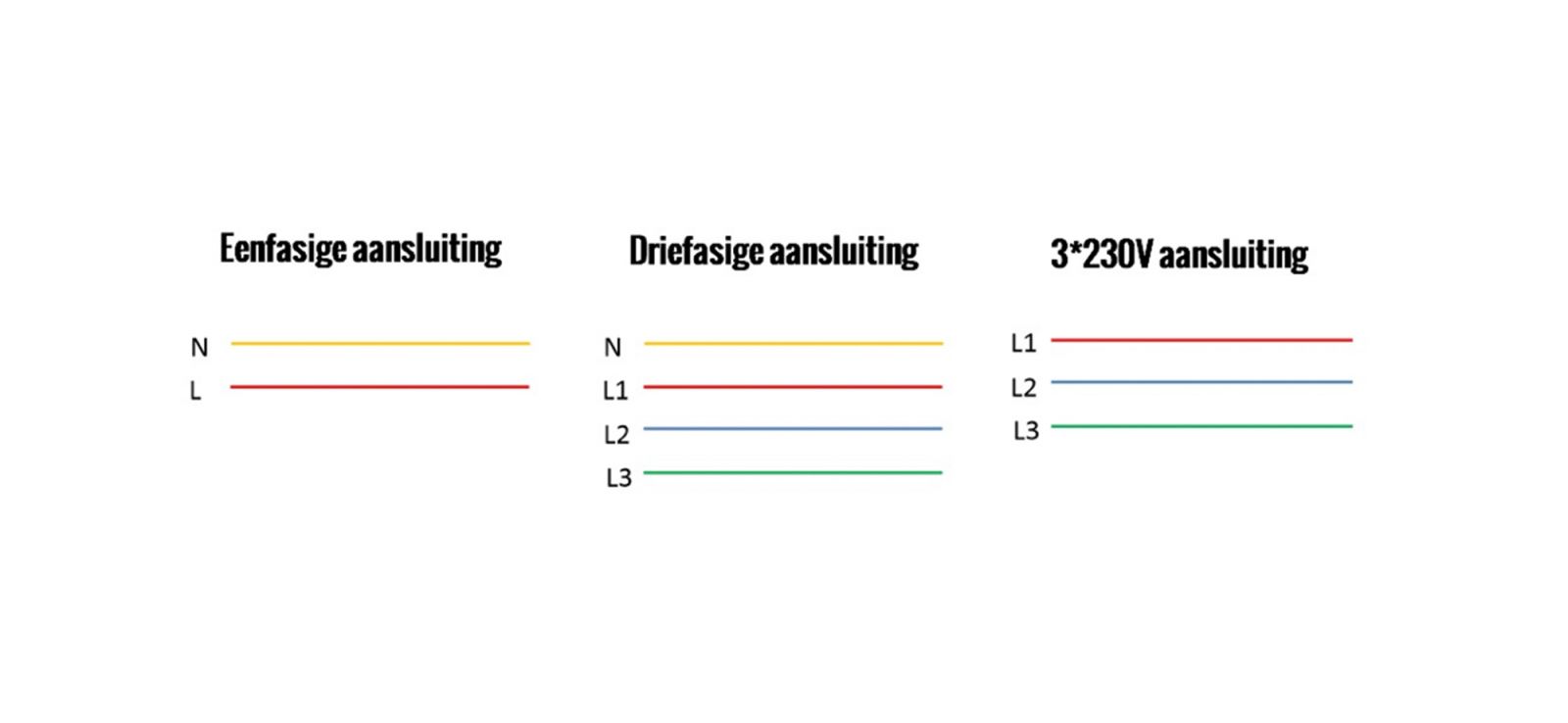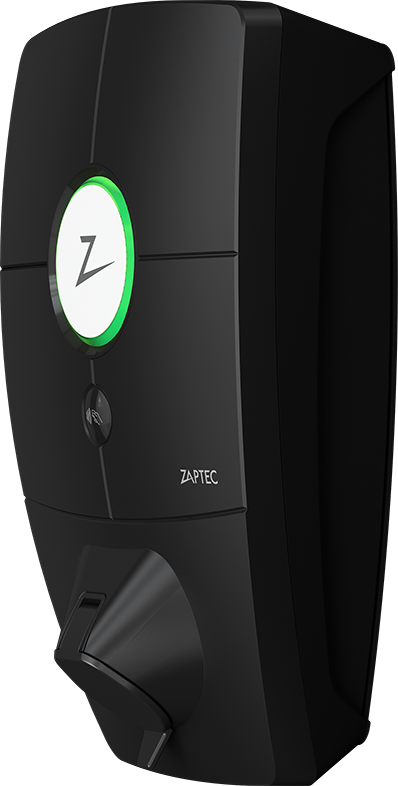Buying an electric car is an important step towards a more sustainable future. But what about charging your car? There are several options in Belgium, and it is important to choose the right one for your needs. In this article, we discuss the different types of electricity connections, the maximum connection capacity and the capacity available for household appliances.
What connection do you have at home?
There are various types of electricity connections available in Belgium. The connection determines the maximum power you can draw, which directly affects the charging speed of your electric car.
230V versus 400V connection
The main difference is between a 230V and a 400V connection. You can recognise this difference by the number of wires running between the meter box of the grid operator and your (main) fuse box. With a 230V connection, you are limited to single-phase charging, with outputs of 3.7kW or 7.4kW. In contrast, a 400V connection allows 3-phase charging, with speeds of 11kW or 22kW.
More info on the difference between 1- and 3-phase charging

Switching to a 400V connection
If you currently have a 230V connection, you might consider switching to a 400V connection. However, it is very important to investigate whether this so-called 'aggravation' is technically possible. Fluvius can investigate this for you.
Maximum connected capacity
Another crucial aspect to consider is the maximum connection capacity, expressed in amps (A). This capacity is determined by the main fuse in your meter box from the grid operator. Consider the maximum number of litres of water that can flow through your water pipe. The thickness of the cable determines the maximum current in amps. Typical connections range between 20A, 40A and 63A. If you want to be able to charge with 7.4kW or 22kW, you need at least 32A. For 3.7kW or 11kW, 16A will suffice.
Available capacity for household appliances
It is also important to maintain a safety margin for other electrical appliances in your home, such as lights, cooking appliances and heating. If the available capacity becomes too tight, you can consider installing a load balancing system. This system constantly monitors your energy consumption and distributes the available power optimally between your household appliances and your electric car.
Specific solutions
Watch out! In Belgium, there are still old electricity networks where only 3 wires run between the meter box and the (main) fuse box, known as the 3*230V connection. Here, the maximum load capacity is limited to 7.4kW.
What charging station should you choose?
These charging stations can be connected either single-phase or three-phase. This means you can effortlessly install a charging station without the need for grid reinforcement. You can choose a future-proof fast charger of 11kW or 22kW. If you currently have a hybrid car, a single-phase charging station may be sufficient. However, if you are considering an electric car in the future, we recommend opting for a three-phase charging station.

Alfen Eve Single Pro
The Eve Single Pro-line is a smart charging solution and is optimally suited to private and semi-public locations.

Zaptec Pro
The Zaptec Pro is a smart and efficient charging device for large parking lots of residences, businesses or new construction projects.

Zaptec GO
The Zaptec GO is the perfect solution for home charging. The smallest charging device on the market is also very strong, allowing you to charge your EV quickly.
Do you choose a fixed or loose cable with your charging station?
When you install a charging station for your electric car, you are faced with the choice between a fixed cable or a loose cable. Both options have their own advantages and disadvantages, and the best choice depends on your specific situation and preferences.
Fixed cable
A charging station with a fixed cable means that the cable is always connected to the charging station. This has a number of advantages:
Ease of use: No need to take a separate cable from your car and plug it in each time. You simply grab the fixed cable and plug it into your car.
Time-saving: Because the cable is already ready, you lose less time connecting your car.
Neater: A fixed cable can be more easily rolled up and neatly stored at the charging station, creating a tidy look.
Seperate cable
A charging station with a separate cable offers more flexibility. The advantages are:
Flexibility: You can use different cables for different cars. This is especially useful if you have several electric vehicles.
Adaptability: If you ever need a longer or shorter cable, you can easily swap.: Als je ooit een langere of kortere kabel nodig hebt, kun je eenvoudig wisselen.
Future-proof: Technology changes rapidly. A loose cable makes it easier to respond to future changes in charging standards.
How much does your EV charging at home cost?
In Belgium, electricity prices have changed considerably in recent years. Let's take a look at the current costs and how to calculate them.
In 2023, the average electricity price for households was around €0.35 per kWh,
With an electric car
If your EV consumes an average of 15 kWh per 100 kilometres, you will pay €5.25 for this. This is a difference of almost 43% compared to a petrol engine.
With a traditional car
Petrol currently costs €1.87 per litre. With one litre, you can drive about 20 kilometres. So you need 5 litres to drive 100 kilometres. This will cost you €9.35 per 100 kilometres.
It is a good idea to check your energy consumption and tariffs regularly and, where possible, use cheaper charging times or self-generated energy to minimise your charging costs.
Pluginsights
Kom hier alles te weten over de EV-Sector en vergaar nieuwe inzichten in de transitie naar eMobility.